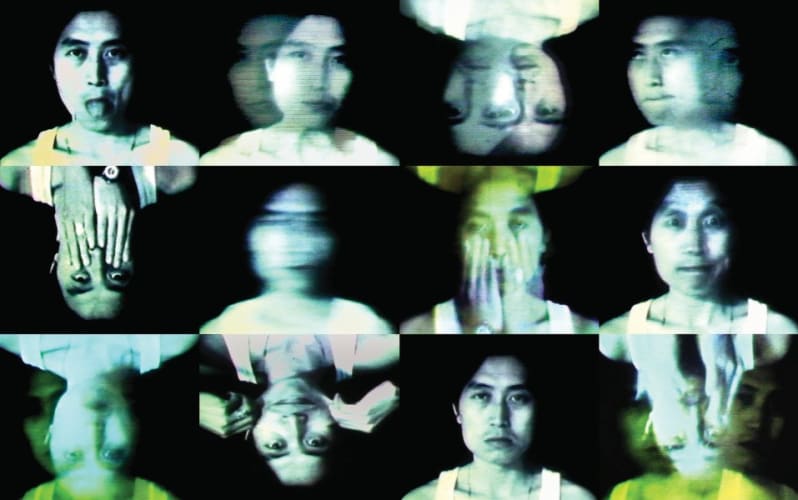Video/Film
Single-channel video, sound, 5 min 30 sec
5 + 2 AP
0When someone is bored beyond belief at work in the middle of the night, what can he do? One night 41 years ago, Chao-Tang Chang was going stir crazy in his office, so he set up a 16mm camera, and turned the film speed to 2 frames per second (most films run at 24 fps), then he started the camera and began to shake and bob his head in front of the lens. Afterward, he asked a darkroom technician to develop this 100 feet of B/W Reversal Film. He colorized it in three different tones, reversed and overprinted the film. The result was Face in Motion. The music track was “Pulstar” by Vangelis, a Greek experimental electronic musician just emerging at the time. Set against these frantically paced science fiction sound effects, faces constantly come and go, linger and fade, contort and transform, radically conveying nightmarish, unsettled and illusory imaginings.
As music sociologist Ho Tung-hung describes it, rhythmic pulses of synthetic tones form the structure of crescendoing, repetitive musical sentences, with overlapping layers and the progressive expansion of multiple musical instruments; amidst sudden “seizures” at fixed intervals, melodic variations accompany fleeting reconstructions and reappearances of Chang’s face moving in various directions. At the end of the song, a mechanized voice speaks three times, announcing the time of day. Like the terminal phase of a star’s life when, compacted by the centripetal pressures of its own gravity, it transforms into an extremely dense neutron star from which waves of radiation emanate in cycles of milliseconds, this passage metonymically suggests the human condition when seized by a stroke.

